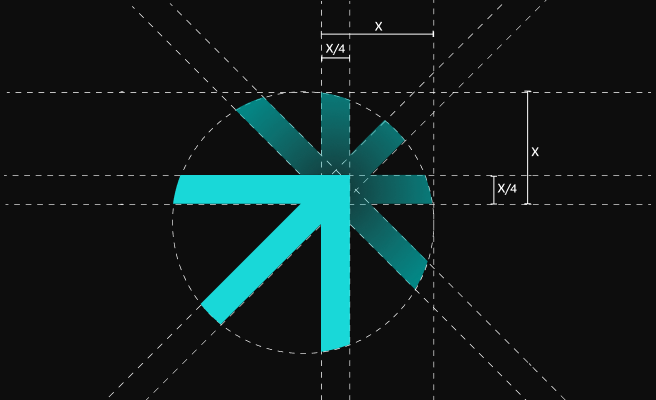Typography
<p>Typography refers to the art and technique of arranging type to make written language legible, readable, and visually appealing. It plays a crucial role in digital product design, shaping how users perceive and interact with content. Effective typography enhances user experience (UX) by guiding readers through the content, establishing a hierarchy, and setting the tone and mood of the digital product.</p>
<p>Historically, typography has evolved from the early days of printing presses to the digital age, where designers have a vast array of fonts and tools at their disposal. In the context of sustainable digital product design, typography should not only be aesthetically pleasing but also contribute to the overall sustainability goals of the project. For instance, selecting eco-friendly fonts that require less ink can be a small yet impactful step toward sustainability.</p>
<h2 id="1">Components of Typography</h2>
<p>Typography consists of several key components including font types, sizes, line spacing, and color. Understanding these components is essential for creating visually cohesive and effective designs.</p>
<p><strong>Font Types:</strong> There are two primary categories of fonts: serif and sans-serif. Serif fonts, characterized by small lines or strokes attached to the end of larger strokes, are often used in printed materials. Sans-serif fonts, which lack these decorative elements, are commonly used in digital designs due to their clean and modern appearance.</p>
<p><strong>Font Size:</strong> Font size impacts readability and hierarchy. Larger fonts emphasize headlines, while smaller fonts are used for body text. It is essential to maintain a balanced scale to ensure legibility across various devices.</p>
<p><strong>Line Spacing:</strong> Also known as leading, line spacing refers to the vertical distance between lines of text. Adequate line spacing improves readability by preventing the text from appearing cramped.</p>
<p><strong>Color:</strong> The color of the text and its background affects readability and user engagement. High contrast between the text and background enhances legibility, while color choices should align with the brand’s identity and accessibility standards.</p>
<h2 id="2">Benefits of Good Typography</h2>
<p>Good typography offers numerous benefits, including improved readability, better user engagement, and enhanced visual appeal. It can also contribute to the overall user experience by making information easier to digest and navigate.</p>
<p>For example, the use of consistent and well-thought-out typography can help <a href="https://www.nngroup.com/articles/typography-scan-ability/" style="color: #2896FF; text-decoration: underline;">improve scan-ability</a>, allowing users to quickly find the information they need. Additionally, typography that aligns with the brand’s voice and tone can enhance brand recognition and loyalty.</p>
<h3 id="3">Challenges in Typography</h3>
<p>Despite its benefits, working with typography presents certain challenges. Designers must carefully select and pair fonts, manage line lengths and spacing, and ensure consistency across different devices and screen sizes. Balancing aesthetics with functionality and accessibility is crucial.</p>
<p>One common challenge is ensuring that typography is accessible to all users, including those with visual impairments. Designers should adhere to <a href="https://www.w3.org/WAI/WCAG21/quickref/" style="color: #2896FF; text-decoration: underline;">WCAG guidelines</a> to create accessible digital products. This includes using sufficient contrast, avoiding small font sizes, and providing text alternatives for non-text content.</p>
<h3 id="4">Implementing Typography in Sustainable Design</h3>
<p>Incorporating typography in sustainable design involves mindful choices that reduce environmental impact. For instance, designers can select fonts that consume less ink or opt for web fonts that require minimal data transfer. Additionally, using responsive typography ensures optimal readability across various devices, reducing the need for multiple design versions.</p>
<p>Case Study: A climate-tech startup focused on green manufacturing implemented sustainable typography by choosing eco-friendly fonts and optimizing line spacing to minimize ink usage in their printed materials. This not only aligned with their sustainability goals but also enhanced the readability and visual appeal of their marketing collateral.</p>
<h3 id="5">Tools for Effective Typography</h3>
<p>Several tools can help designers implement effective typography in their projects. Tools like <a href="https://www.google.com/fonts" style="color: #2896FF; text-decoration: underline;">Google Fonts</a> offer a wide range of web-friendly fonts, while <a href="https://www.typewolf.com/" style="color: #2896FF; text-decoration: underline;">Typewolf</a> provides inspiration and recommendations for font pairings. For accessibility, <a href="https://webaim.org/resources/contrastchecker/" style="color: #2896FF; text-decoration: underline;">WebAIM’s contrast checker</a> is an invaluable resource.</p>
<h2 id="6">Conclusion</h2>
<p>Typography is a fundamental aspect of sustainable digital product design, influencing readability, user engagement, and overall user experience. By understanding its components and benefits, addressing its challenges, and using appropriate tools, designers can create visually appealing and accessible digital products that align with sustainability goals. <p>If you need inspiration on building credible and trustworthy brands, check out our work with <a href="https://www.whatifdesign.co/work/susteon-brand-website-design-carbon-capture-and-utilization" style="color:#2896FF; text-decoration:underline;">Susteon</a> and <a href="https://www.whatifdesign.co/work/labstart-website-design-climate-venture-studio" style="color:#2896FF; text-decoration:underline;">Labstart</a>.
<p>Looking for expert brand and communications support on your venture? <a href="https://cal.com/akhilak/what-if-design?duration=30" style="color:#2896FF; text-decoration:underline;">Book a free 1:1 consultation</a> with us today.</p></p>

Let's scale your impact with great design.
Free consultation, no sales pitch
Thank you! Your submission has been received!
Oops! Something went wrong while submitting the form.
Let’s talk
Nothing great is built alone.
Let’s connect about your vision, our work and how we can collaborate.
Get in touch

